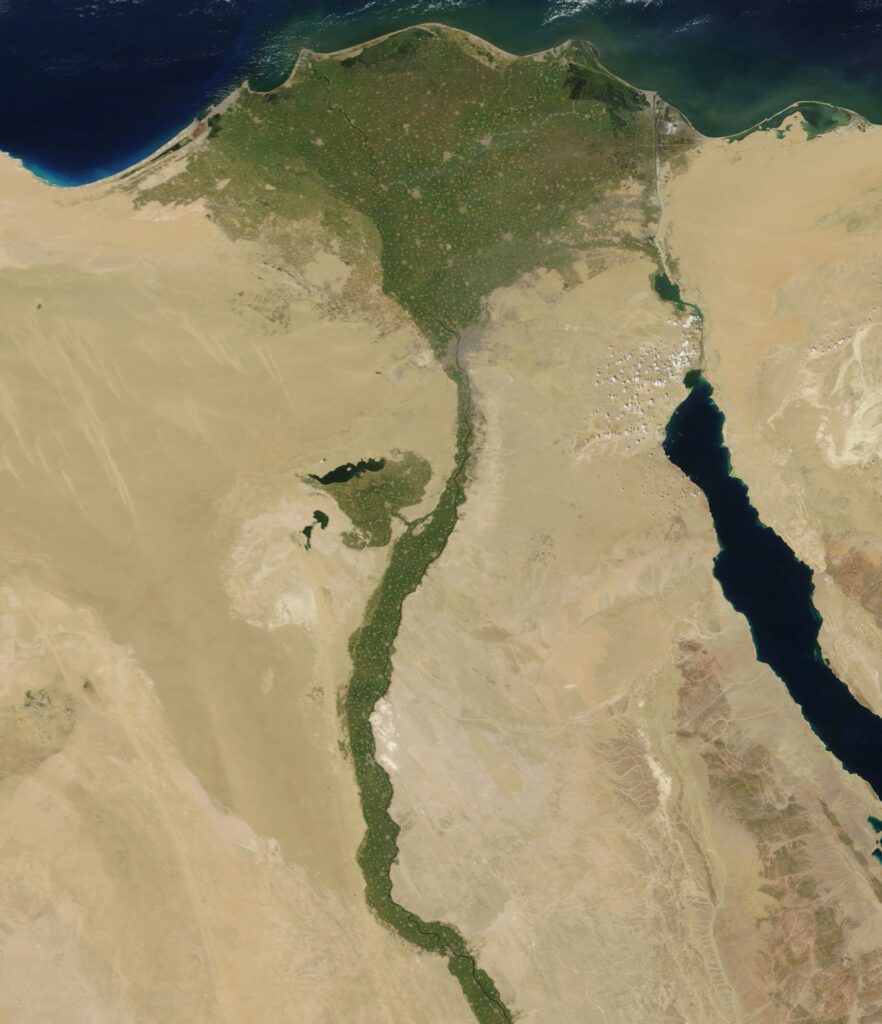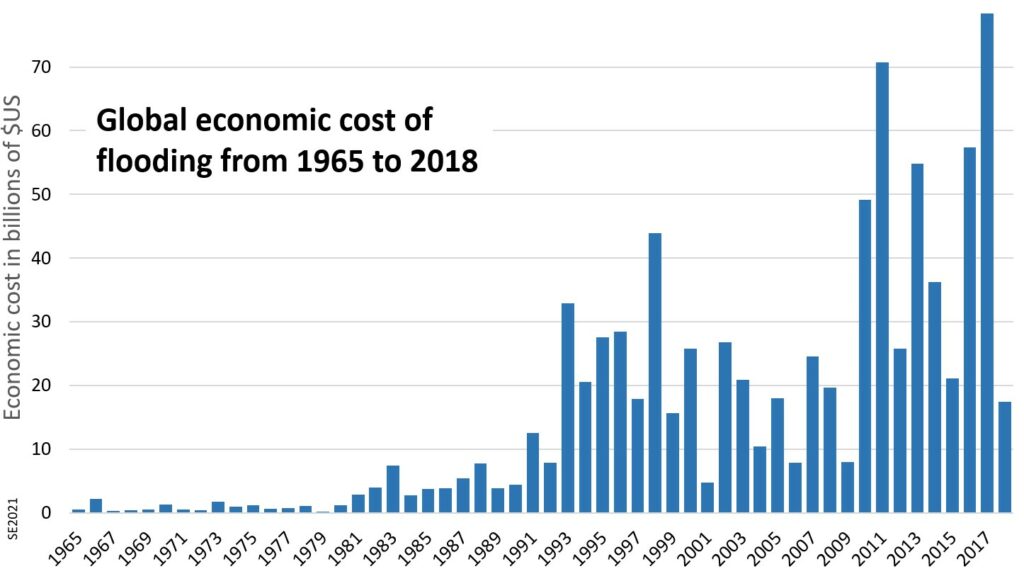Chapter 13 Flooding
Learning Objectives
After reading this chapter, completing the exercises within it, and answering the questions at the end, you should be able to:
- Explain why flooding has been, and remains, an important benefit to human civilizations,
- Describe some of the phenomena that cause flooding,
- Explain how rain or snowmelt water gets into a stream,
- Describe the relationship between the level of the water table and stream discharge,
- List some examples of flooding caused by storms, snow melt and slope failures,
- Explain how changes made to stream channels can make flooding worse, and
- Describe some of the steps we can take to reduce the risks of flooding and the damage caused by flooding.
The River Nile defines a green swath across the otherwise arid Sahara Desert, (Figure 13.0.1) and for thousands of years the Nile has been the lifeblood for humans in that region. For most of that time farming was timed by the annual late summer floods that originated with intense monsoon rains in the highlands of Ethiopia. Those floods inundated the area for several kilometres on either side of the river, as well as much of the delta. Each year when the floods receded the soil was saturated with water and covered with a layer of fertile silt. The crops planted after the flood grew vigorously, and when harvested a few months later, would feed the population until the next summer—unless the flood was small or didn’t come at all. Although there were famine years, flooding of the Nile was sufficiently reliable that the river has supported a population of several million since about 1500 BCE.

The lower Nile doesn’t flood any more because the floodwaters are captured by the High Aswan Dam, but Egypt now has a well-developed irrigation system to distribute Nile water to its agricultural regions.
Floods adjacent to rivers and on deltas have created and maintained the relatively flat and fertile land that most people in the world live on or close to, and, as in Egypt, floodplains are where our agricultural ancestors first made their living. But while flooding has always benefited us, it is increasingly becoming a problem because, instead of living with floods, we have chosen to fight against them. We have occupied the world’s floodplains and filled them with buildings and transportation infrastructure so that when floods happen—as they always will—it costs us dearly. As shown on Figure 13.0.2, the global economic costs of flooding have increased dramatically in recent decades. Over the time period shown, flooding represented almost 30% of the costs of all natural disasters, second only to extreme weather events (many of which caused floods). Part of the increase in the cost of floods may be a result climate change, but much of it is because there are so many more of us living on floodplains, because we have tried to control rivers, and because our infrastructure is now much more expensive.

This chapter is only about river flooding. Coastal flooding related to storms, and from climate-change sea-level rise are covered in Chapter 15.
Media Attributions
- Figure 13.0.1 Egypt, NASA, public domain, via Wikimedia Commons, https://commons.wikimedia.org/wiki/File:Egypt_(5635018418).jpg
- Figure 13.0.2 Steven Earle, CC BY 4.0, using data from EMDAT, 2020, OFDA/CRED International Disaster Database, Université catholique de Louvain – Brussels – Belgium, https://ourworldindata.org/grapher/damage-costs-from-natural-disasters/
